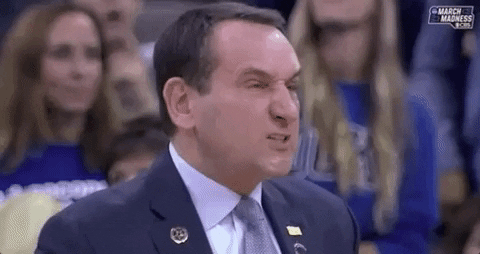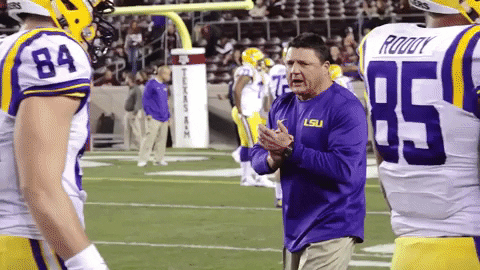Why College Athletes are WEAK
BUILD YOUR OWN PROGRAM
Download our FREE Template by entering below

Why College Athletes Are Weak
Oftentimes we have athletes that are state champs, all-state wrestlers, all-state football players, all-state volleyball players, and many other sports, but we have had experience with athletes going off to college, playing their sport, and end up getting hurt all the time. We have heard from other elite strength coaches that work with high school athletes having similar experiences. Why are these athletes being better developed at the high school level and not being trained as well at the college level?
The first thing we have to think about is what school the athletes are going to. The schools are power five schools, mid-majors who lack funding, or DII or DIII schools with no funding who have to use intern based strength and conditioning coaches who are very static in what they believe.
The college sports strength and conditioning coaches are often training athletes for sports like football, basketball, volleyball, baseball, and more. The functional zealots are often in sports like golf or soccer. Kids will head off to their school and receive a program to complete. They’ll show us the program, go and do the work for a substantial amount of time, come back, and they’ll be weaker and less motivated. They are showing me programs with a squat, clean, bench press, a pull up, and a bent over row all in the same workout. This is a big problem. These programs look like a monkey just threw exercises against the wall to create the workout!

Problems Collegiate Coaches Face
Before every NCAA strength and conditioning coach hits up my DM’s, I do want to acknowledge that they have time constraints put on them by the NCAA. They have a brief amount of time they can work with these athletes. NCAA strength and conditioning coaches are always working in larger groups. I believe training athletes in larger groups is more beneficial but can pose some problems early in a training system if you have people in the same program with drastically different capabilities, so there can be a massive disparity between levels of athletes training in the same group.
And let’s face it, college kids eat poorly, are not focused with their scheduling, don’t have the structure that family provides, they’re not sleeping, and they’re probably out partying and doing dumb stuff all the time.
We need to be aware of the problems collegiate strength and conditioning coaches are facing. Still, those issues don’t design a program that has a squat, clean, bench press, pull up, and bent over row in the same workout.
Prequel Problem
I believe the main issue is that linear periodization is dead. Collegiate strength and conditioning coaches love linear periodization. I apologize to all the linear periodization gurus. It is so old. It is so dated. Let’s move on.
Now linear periodization is where the periodization will start with a hypertrophy phase that will lead into a base phase, and then that base phase will lead into a strength-power phase. From that strength-power phase, they will lead into peak power or performance specific period. It is almost this feeling that you can only work hypertrophy during this period and can only work power-based movements during this period. It is typically three sets of five or three sets of ten with the same type of loading as well. It is pretty simplistic.
It is also known that we can work hypertrophy and power-based movements in multiple phases and elicit really good responses. So that is my first problem–basing things around linear periodization.

Real Deal Problem
The real problem is that there is not enough volume.
“During the hypertrophy phase we can only focus on hypertrophy. We can’t do anything that revolves around power development!” Athletes then don’t have time to learn technical coordination movements that will enhance their power development. Which leads us too little time on key movements with too little time to adapt which leads to less strength and less power output.
In a linear periodization model, athletes may do weightlifting or explosive based exercises for six to eight weeks instead of doing it for all sixteen to twenty weeks of an entire, truly thought out system. Our system, Parabolic Periodization, sure has explosive based exercises being performed all the time.
It is important to see that if we are so laser focused on hypertrophy, strength, and then power, it can inhibit the volume for each class of exercise. In the long haul, this isn’t good. Instead, it leads to too many exercises within an actual workout and not enough thought going into transfer of training. This is when the workouts with three or four major movements show up, instead of having workouts with one or two major movements in one workout.
My Hope
My whole goal is to say linear periodization is outdated and is not the best form. I also wanted to acknowledge the immaturity of the young adults they are training who are out on their own for the first time. But still, I also know the coaches write terrible programs with too many exercises with too few sets.
How about we do this to alleviate this problem.
Start with a ten minute time frame to warm-up. Have the exercises laid out. Three to four movements are all that is needed. As soon as that ten minute time frame is done, move into the actual real workout.
1A
This section needs to be a technical coordination movement. Technical coordination movements are typically a weightlifting movement: a snatch, hang clean, power clean, a two box snatch, a low hang power clean, and so on and so on.
There should be a minimum of six working sets. To do this in a nice time frame, time the rest periods with two to three people on a platform. This will allow the athletes to get the work done in an efficient manner while still getting enough volume with the technical coordination exercises.

2A & 2B
Here we want five to six sets of an absolute strength movement supersetted with some type of trunk movement or other accessory that the working group has physical leaks (maybe they need their hips mobilized or they lack dynamic trunk control).
For instance, we can have athletes do back squats, front squats, or single-leg squats paired with a specific trunk exercise to enhance their dynamic trunk control. We need to use a movement in the superset that will enhance the athletes’ performance. We need to think about transfer of training, not just making an athlete sweaty.
3A (3B And Maybe 3C)
We want to finish the workout with some type of accessory movements. Think of it being three to four sets of a triplet or maybe just superset the exercises. Think of a field hockey player with lower back issues. In this case, we want to have the athlete do a reverse hyper, sled pulls forward and backward, and finish with Nordic hamstring curls. In this possible scenario, we target the anterior sequence, the posterior chain, and isolate the hamstrings. We set the athlete up to be more explosive and faster.
Recap
The technical coordination movements teach athletes the importance of technique and how to recruit more effectively. During the absolute strength phase they learn how to coordinate muscles effectively with their prime movers. Now the workout, which at one time had ten to twelve movements, now has six exercises and is more concise. Athletes will get stronger, have more time to practice the technique, get to focus on a strength training movement that blows up their technical coordination, and we finish with some structural integrity work. This is a great way to alleviate the time constraints college coaches are put under, rid the programming of linear periodization, and focus on the movements that transfer the best to sports performance.
Finally, this can be done four days a week in an hour and fifteen minutes. Athletes can get the work done, focus on their competitive sport, recover better, and get on that undulating periodization kick.
Related Posts
Blog Topics

Yo, It's Dane
Welcome to the Garage Strength Blog, where it is my goal to provide you with the experience and knowledge I've gained in the strength and conditioning world over many years of learning from both successes and failures. I train elite-level athletes in a multitude of sports from the high school to professional levels, already producing 5 Olympics and 30+ National Champions. If you want to be the next champion I train, check out my strength programs below!
Start Training With Me

Join for free educational videos EVERY WEEK on strength coaching and athletic performance



